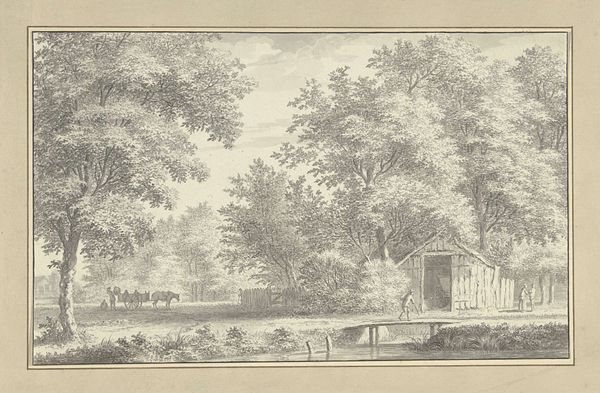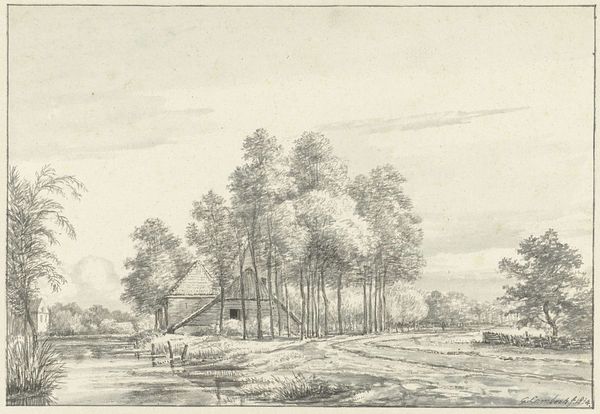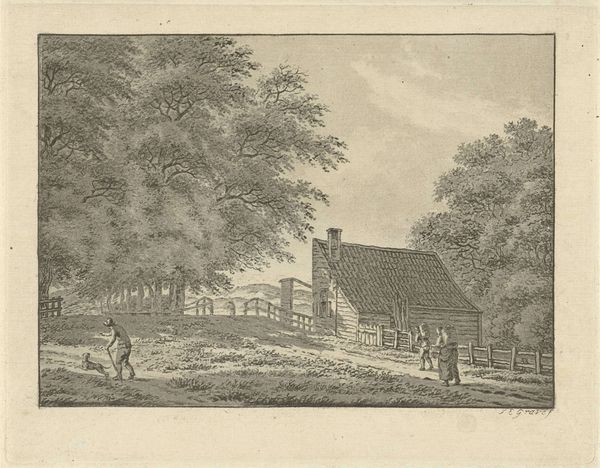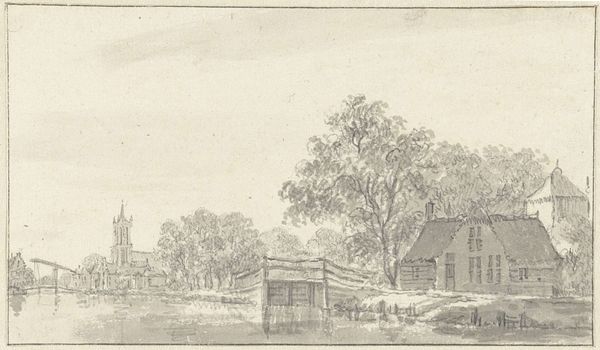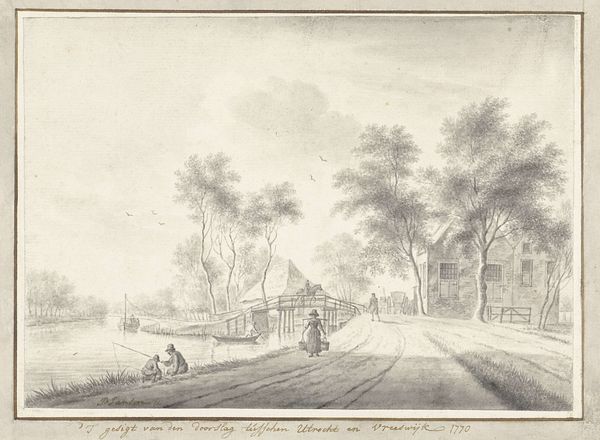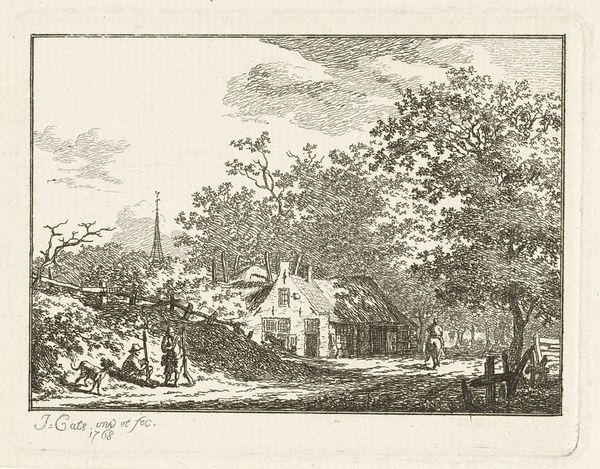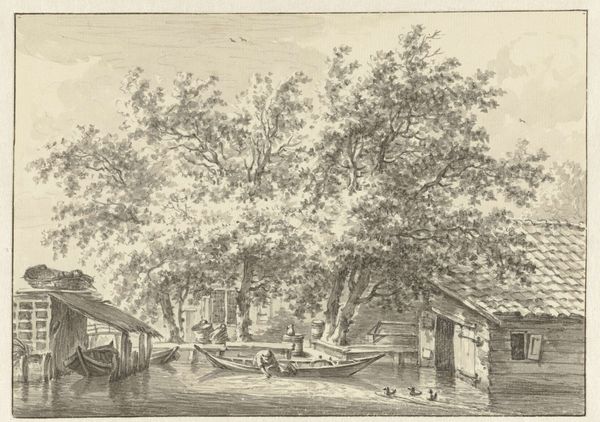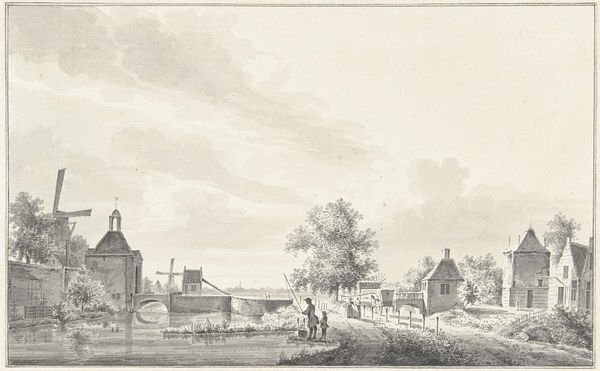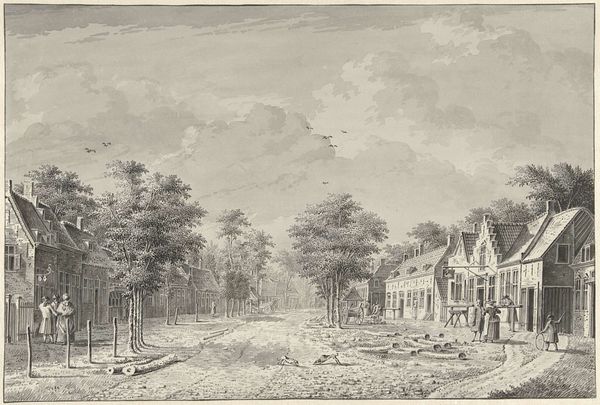
drawing, etching, paper, ink, pencil
#
drawing
#
baroque
#
dutch-golden-age
#
etching
#
landscape
#
etching
#
paper
#
ink
#
pencil
#
cityscape
Dimensions: height 167 mm, width 334 mm
Copyright: Rijks Museum: Open Domain
Editor: So, this is Jan de Beijer's "Gezicht te Bunnik," probably made between 1751 and 1758. It’s a cityscape drawn with pencil, ink, and etching on paper. There's a quiet, almost melancholic feel to it, with the delicate lines and muted tones. What stands out to you when you look at this piece? Curator: It's a deceptively simple scene, isn't it? For me, De Beijer has captured a certain kind of Dutch stillness – the kind you only really feel when you escape the bustle of the cities. That church spire peeking through the trees... it's like a tiny anchor in a vast landscape. I’m immediately transported! What does the composition tell you? Does anything strike you as perhaps carefully thought out? Editor: I notice the bridge is almost centered, leading our eye toward the church. Maybe it symbolizes a connection between the everyday and something more... spiritual? Curator: I like that, a visual connection perhaps, between daily life and faith. De Beijer’s rendering of the trees, for instance. Notice how they’re not just background filler – they're individuals, each with their own character. It’s like he’s giving personality to the landscape, hinting at something wilder beyond the village’s edges. It’s romantic, perhaps even a touch baroque in its theatrical staging of nature. Don't you think? Editor: That makes me see the landscape in a whole new way! The trees definitely seem to frame the scene, almost like curtains on a stage. Curator: Exactly! The Dutch Golden Age painters really knew how to celebrate their landscape, to capture light. And even though De Beijer works with simpler materials, pencil and ink, it holds that same quality. What do you think, now that you’ve explored it further? Editor: It definitely feels richer and more complex than I initially thought. I appreciate how it combines detailed observation with a subtle sense of drama, especially with how the natural and man-made elements interact. Thanks! Curator: My pleasure! A landscape like this invites us to slow down, to breathe, and to appreciate the simple beauty all around. It gives us all permission to pause, if we needed it.
Comments
No comments
Be the first to comment and join the conversation on the ultimate creative platform.

